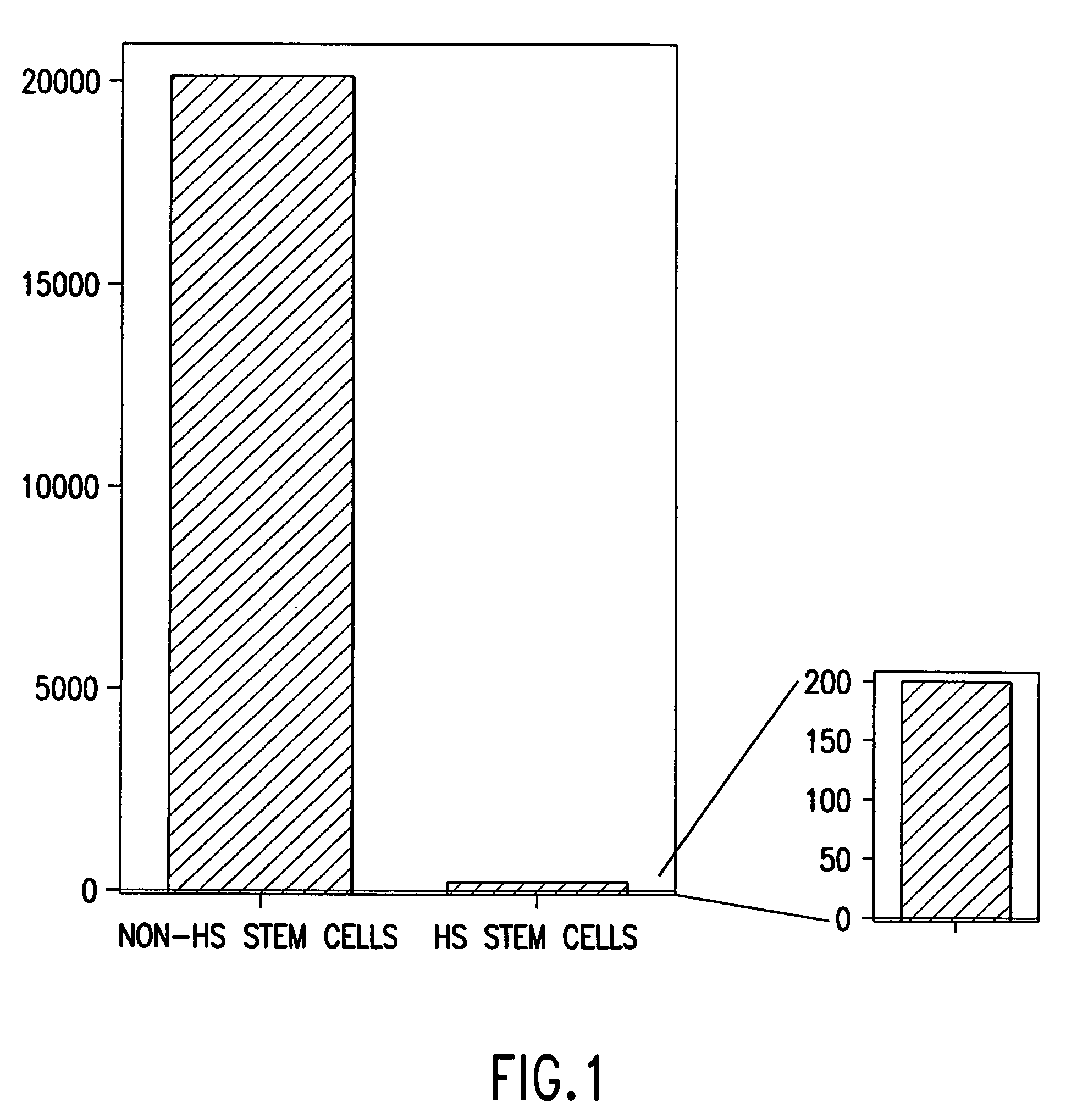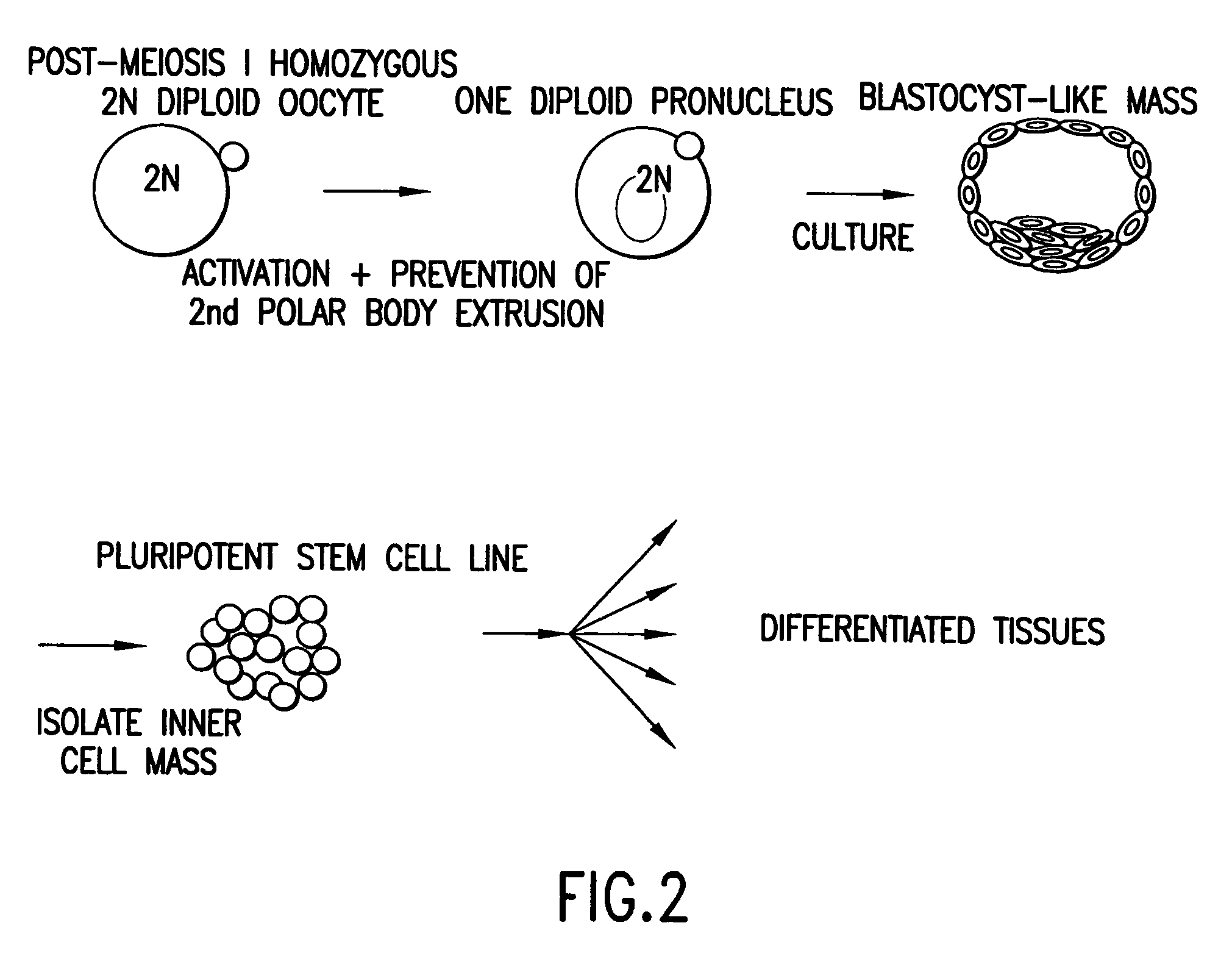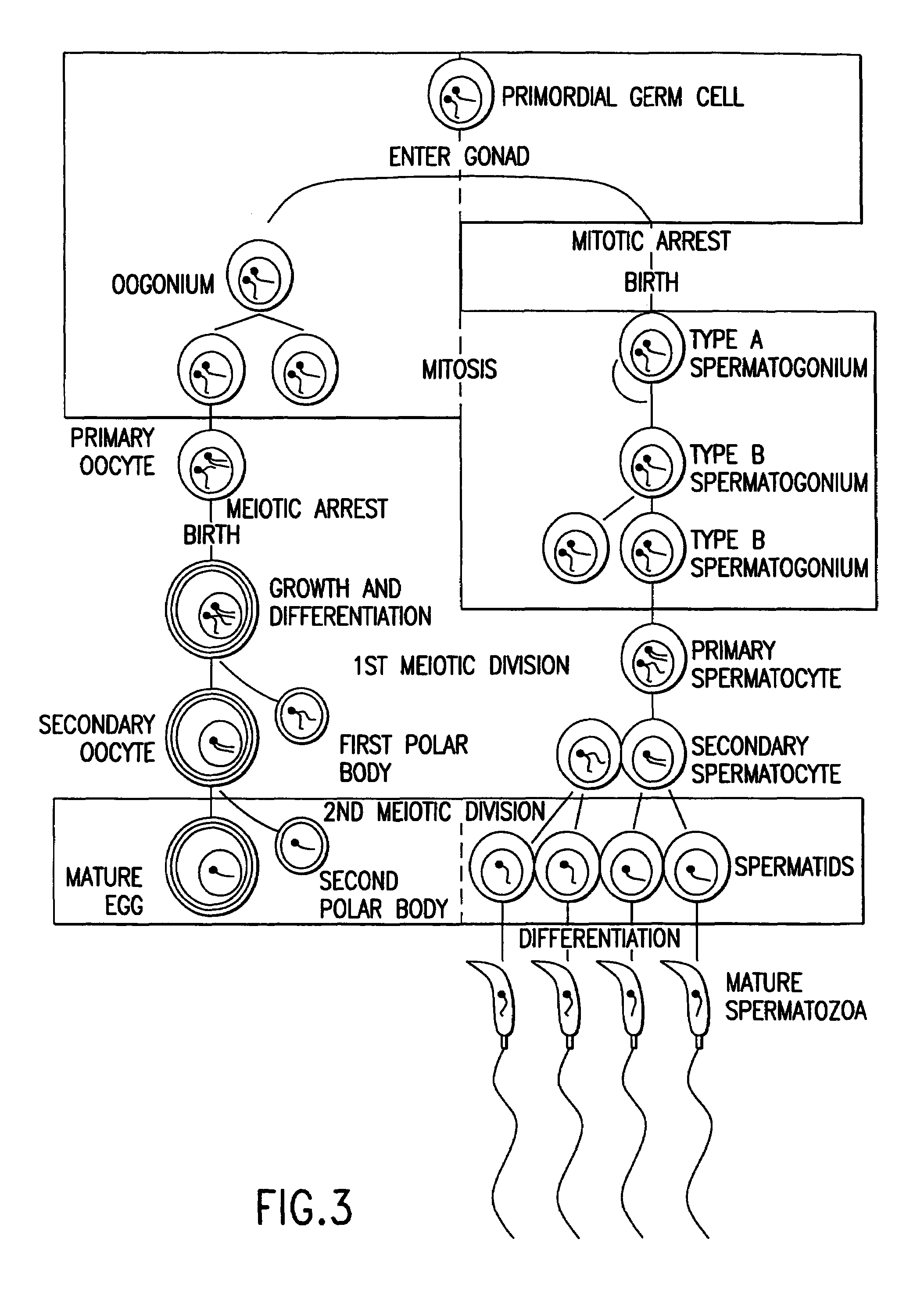Method for producing a population of homozygous stem cells having a pre-selected immunotype and/or genotype, cells suitable for transplant derived therefrom, and materials and methods using same
a technology of stem cells and homozygous stem cells, which is applied in the field of producing a population of homozygous stem cells having a pre-selected immunotype and/or genotype, can solve the problems of reducing the chances of a cytotoxic t-cell response, reducing the chance of a transplant survival, and reducing the number of immunologically different cell lines. , the effect of reducing the number of different cell lines
- Summary
- Abstract
- Description
- Claims
- Application Information
AI Technical Summary
Benefits of technology
Problems solved by technology
Method used
Image
Examples
example 1
Homozygous Stem Cell Formation, and their Differentiation into Progenitor Cells and Various Tissues of the Three Embryonic Germ Layers within Stemplasms
Example 1(a)
Derivation of HS Cells from Mouse Post-Meiosis I Oocytes by Activation Followed by Prevention of the Extrusion of the Secondary Polar Body
[0249]Three eight-week old female C57 / BDA2 F1 mice (Charles River Laboratories, Wilmington, Mass.), were superovulated by sub-peritoneal injections of 5 IU / 100 ul of pregnant mare's serum gonadotropin (PMS; PCCA, Houston, Tex. (29-1000-1BX)), and 5 IU / 100 μl of human chorionic gonadotropin (HCG; Sigma, St. Louis, Mo., (C8554)) with 48 hours apart between the injections. Seventy-three oocytes were harvested about 17 hours after the HCG injection, and the cumulus was removed by incubating the freshly obtained oocytes in a drop (˜300μl) of hyaluronidase (Sigma, H4272) diluted in M2 media (M7167, Sigma) at final concentration of 0.3 mg / ml, followed by 3 washes with HEPES buffered M2 media b...
example 1 (
Example 1(h)
Development and Isolation of Homozygous Progenitor Cells from Transplanted HS Cells
[0278]To obtain homozygous progenitor cells, pluripotent HS cells derived from methods disclosed in the foregoing in the foregoing description and examples are transplanted into immuno-compromised mice under kidney capsules and are allowed to grow in vivo for 4 to 6 weeks. The cell mass obtained is then minced into single cells and cultured on feeder cells for further propagation and development into cell lines.
[0279]To assess the lineage commitment (the types of progenitor cells ), gene expression assays, such as RT-PCR, northern blot, immunohistochemistry, and so forth, are performed for known lineage-specific markers, for example, NF-H, keratin, D-beta-H for the ectoderm, enolase, CMP, rennin, kallikerein, WT1, delta-globin, beta-globin for the mesoderm, and albumin, alpha-1-AT, amylase, PDX-1, insulin, alpha-FP for the endoderm progenitor lineages.
example 2
Selection of HS Cells Having a Target Immunotype from Populations of HS cells Derived from Material Donated by a Relative (e.g. Parent of the Intended Recipient)
[0280]Oocytes are obtained from the recipient's mother by super-ovulation using methods described in the foregoing examples. Once HS cell populations have developed, following methods described in the foregoing examples, a sample of each HS population can be subjected to in vitro differentiation for the optimal expression of HLA molecule (e.g., hemapoietic lineage), the HS-derived sample cells from each population are then tested for HLA-A, -B, and -C specificities using the microlymphotoxicity assay. The test is performed in a 60- or 72 well microlymphotoxicity plate. A panel of antisera, obtained from a commercial source, are selected and prepoured onto the plates and cooled in a −40° or −70° C. freezer. 0.5–1 μl of HS cell suspension (prepared by suspending HS cells in RPMI, or a desired diluent for typing, to 1.5×106 HS-...
PUM
| Property | Measurement | Unit |
|---|---|---|
| volume | aaaaa | aaaaa |
| concentration | aaaaa | aaaaa |
| temperature | aaaaa | aaaaa |
Abstract
Description
Claims
Application Information
 Login to View More
Login to View More - R&D
- Intellectual Property
- Life Sciences
- Materials
- Tech Scout
- Unparalleled Data Quality
- Higher Quality Content
- 60% Fewer Hallucinations
Browse by: Latest US Patents, China's latest patents, Technical Efficacy Thesaurus, Application Domain, Technology Topic, Popular Technical Reports.
© 2025 PatSnap. All rights reserved.Legal|Privacy policy|Modern Slavery Act Transparency Statement|Sitemap|About US| Contact US: help@patsnap.com



